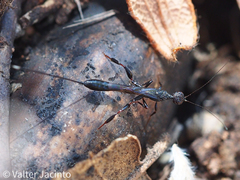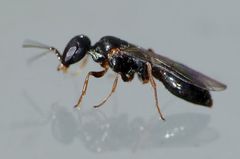Empusa pennata

Empusa pennata, commonly known as the "Conehead Mantis" or in some areas of Spain as the "mantis palo", is a fascinating insect found in the Comunidad Valenciana. It is a member of the order Insecta and the family Empusidae.
Here are some key characteristics of the Empusa pennata:
- Appearance: This species is easily recognizable by its elongated and slender body, which provides excellent camouflage among the vegetation. The most striking feature is its cone-shaped head with prominent antennae. Adults have a slender and elongated thorax, giving an elegant and delicate appearance.
- Coloration: The coloration of the Empusa pennata can vary but is generally a mix of green, brown, and even beige, allowing it to blend seamlessly into its surroundings, particularly in dry grasslands and shrublands.
- Behavior: Known for its "cryptic" lifestyle, this mantis is an ambush predator, waiting patiently to snare unsuspecting prey such as flies, small moths, and other insects with its raptorial front legs.
- Habitat: The Empusa pennata is typically found in the Mediterranean basin, favoring dry, open areas with plentiful vegetation where it can easily remain undetected by both predators and prey.
- Lifespan and Reproduction: Like many mantids, the lifecycle includes an egg stage, several juvenile stages (nymphs), and an adult stage. Females lay eggs in a protective case known as an ootheca, which helps safeguard them during development.
Overall, the Empusa pennata is a remarkable example of the diverse mantis species inhabiting the Mediterranean environments of the Comunidad Valenciana, showcasing incredible adaptations for survival and predation.







